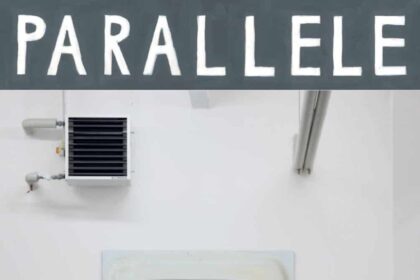Museum of the Home, a major museum in the East London cultural hotspot of Hoxton, is proud to announce the opening of their new Rooms Through Time: 1878-2049, the culmination of a six-year- long journey of research and community co-curation. The newly refurbished gallery will be home to seven new and permanent period rooms. For the first time at the museum, the rooms will welcome visitors to get hands-on in the rooms for an interactive journey into the lives and stories of people who have enriched the fabric of London over the past two centuries.
As part of Museum of the Home’s commitment to revealing and rethinking how we live in order to live better together, the gallery will introduce a more diverse array of narratives to the Museum’s renowned Rooms Through Time. Each room has been co-curated, using personal stories to speak to universal themes including migration, homemaking, belonging, and more. These narratives are deeply intertwined with the complex histories of migration and identity that have shaped London for generations, and which resonate on a national and global scale.
In response to audience feedback, visitors will now have the opportunity to step inside the spaces— from bedrooms and bathrooms to kitchens and gardens—and immerse themselves in each. From the aroma of lokshen soup wafting from the stove in 1913, singing karaoke in 2024, or changing the music on a record player and curling up on the sofa in 1978, guests will be transported through time, encountering objects and fragments of the stories that constitute our shared history.
The Real Rooms project is made possible by the National Lottery Heritage Fund thanks to money raised by National Lottery players; by the industry leading construction and development firm Innovo; and the DCMS/Wolfson Museums and Galleries Improvement Fund.
The Rooms
The new period rooms include A Townhouse in 1878, illuminating visitors on the life of an Ayah who has looked after a family’s children during a three-week long journey between Calcutta (Kolkata) and London.
A Tenement Flat in 1913 presents a family welcoming in Shabbos (the Sabbath), marking the Jewish day of rest, in a space akin to the 19th-century Rothschild Buildings in Spitalfields offering home to Jewish families fleeing to the UK.
Through the gallery, past familiar London housing facades, visitors will enter A Room Upstairs in 1956. Reflecting the experience of Irish immigrants, learn about two newlyweds having moved to London to work for the newly formed NHS and seeking construction opportunities in post-war Britain.
Visitors will be delighted to welcome back the Museum’s much-loved 1970s period room curated by Michael McMillan. The revamped space – A Terraced House in 1978 – will join the McMillan family as they gather round the television for the premiere of Empire Road, the first predominantly black British soap opera.
Moving on through the curved gallery space and an interactive on squatting communities visitors will find A High Rise Flat in 2005, highlighting LGBTQIA+ experiences of home life in the early 2000s, where Nadia and Ashley have been looking for another flatmate to move into their spare room.
In the present day, A Terraced House in 2024 will welcome visitors into a relaxed Sunday afternoon in the Nguyễn household, complete with live karaoke and a well-loved kitchen belonging to a first- generation British Vietnamese home.
Finally, A Converted Flat in 2049: The Innovo Room of the Future will allow visitors a view into the future of the home in light of climate change and technological growth – featuring a farm-free food machine and a memory intensification system, while energy kites and emissions patrol drones soar above the fringe of Great Hackney Marsh.
In a new and dynamic projection space, visitors will be immersed in views from windows through time, wandering past building facades and exploring the city through an immersive video installation. These elements draw on collaborative research on home and the city at the Centre for Studies of Home, a partnership between Museum of the Home and Queen Mary University of London. The reopening will also bring new family-friendly interactives to the Museum, including a digital journey through the gallery with urban animals – an essential part of London life.
Co-curation and centring community
From their conception, these rooms have been developed in collaboration and consultation between the Museum’s curatorial team, community producers and the communities represented. This unique co-curation has informed both the storytelling and design elements of each room, ensuring an authentic and respectful portrayal of the diverse experiences encapsulated within. Curated through a mix of archival research and oral history interviews, the rooms explore and celebrate home in all its
complexity and contradictions – what home has meant to different people over the decades, and what it may mean in the decades to come.
Director of Museum of the Home, Sonia Solicari says, “The Real Rooms project is a commitment to telling diverse, thought-provoking and personal stories to honour the lived experiences of the communities represented. We hope to foster learning and connection among visitors, inspiring conversations about the meaning of ‘home’ in today’s world.”
Museum of the Home has expanded what a period room does and the ways in which it can use its collections to connect with visitors. As part of the Real Rooms project, the Museum has significantly expanded its collections with notable acquisitions.
These include “A Young Teacher” (1861) by Rebecca Solomon, offering a nuanced reflection on gender, race, religion, and education in mid-nineteenth century London. For the 1910s room, the Museum acquired silver kiddush cups and a salt and pepper set, significant for marking religious occasions despite their expense for a working-class family. Community donations have also been crucial to this work of collaborative storytelling; for instance, donated alongside the story of a dim sum chef from one of Chinatown’s first Chinese restaurants, a set of original dumpling weighing scales will be featured in A Terraced House in 2024.
Objects within each room also reflect evolving tastes and styles over time, textures and patterns from each era. From Victorian floral motifs to mid-twentieth-century geometric designs. Furniture, textiles, and decor adapt to changing trends, reflecting shifting preferences and innovations of each period, while A Converted Flat in 2049 offers a glimpse into potential future changes. Through these design elements, visitors will gain insights into how homes have evolved aesthetically alongside societal shifts.
Visitors will also be able to enjoy a great selection of food and drink at the newly reopened Museum café, Molly’s Bar & Kitchen, named after pioneer in modern museum education, Molly Harrison, a curator at the museum between 1946 to 1969.
Coming soon
The opening of these seven new rooms on Tuesday 23rd July 2024 marks a significant milestone in Museum of the Home’s ongoing commitment to growing content that is personal and powerful, and expanding its collection with oral histories, acquisitions, and sustained community engagement. These rooms foster a deeper understanding of our shared experiences and the ways in which we have made and continue to make home. The themes and stories in each room will be unpacked further in an event programme including talks, workshops, and seven Museum Lates, each focused on a particular room.























